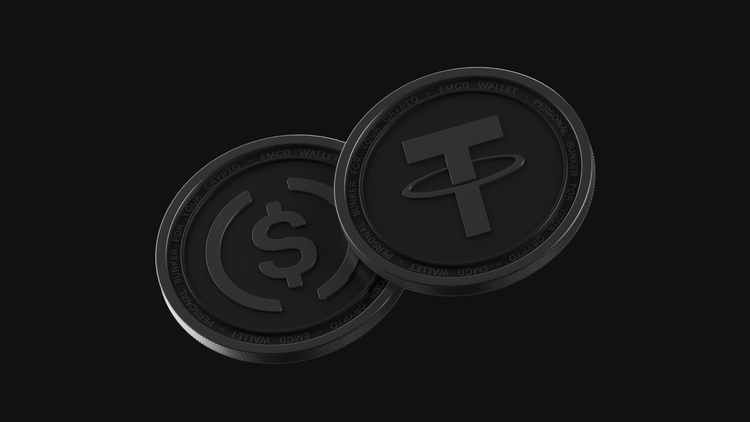What is a Blockchain Transaction and How It Works

Blockchain transactions are the operations that update a blockchain’s ledger by recording the transfer of value or data. In practice, one party authorizes a digital transfer to another over a peer-to-peer network; miners/validators batch these transfers into blocks, link them cryptographically, and reach consensus so the history becomes tamper-evident and effectively immutable.
This overview explains what a transaction is, its components, how it is processed, on-chain vs off-chain variants, typical uses, benefits and limits, where the field is heading, and answers to common questions.
What is a Blockchain Transaction?
A blockchain transaction is a structured record that expresses either (a) a transfer of a cryptoasset or (b) the execution of code (e.g., a smart-contract call). A standard payment transaction contains:
- amount or payload
- sender input(s)
- receiver output(s)
a digital signature proving the sender’s authorization
Coins do not exist as standalone objects — they are only records of transactions in the distributed ledger. Bitcoin, for example, is just the evolving set of confirmed transactions that update address balances.
Blockchains are decentralized databases maintained by many nodes. Each keeps a copy of confirmed blocks, giving redundancy and transparency. Once a transaction is confirmed in a block and the block is extended, it becomes part of the permanent history and cannot be altered by a single party.
Key Components of a Blockchain Transaction
- Input (sender address): References prior unspent outputs that fund the transfer. Addresses are derived from public keys
- Amount / Data: Coins or tokens to move, or call data for contracts
- Output (receiver address): Where funds or state changes go; a transaction may have multiple outputs (including change)
- Signature (authorization): Created with the sender’s private key; nodes verify with the corresponding public key
Transaction ID (hash): A unique digest used to reference and audit the transaction
In UTXO-based systems (e.g., Bitcoin), transactions consume inputs and create new outputs, forming a chain of ownership that is fully traceable on the public ledger.
How Does a Blockchain Transaction Work?
- Creation: A wallet constructs the transaction (inputs/outputs), signs it, and marks it pending (unconfirmed)
- Broadcast: The wallet relays the transaction to peers; nodes place valid transactions into a mempool
- Prioritization: Nodes/miners validate syntax, signatures, and funds. Fees influence priority — higher-fee transactions are typically included first
- Inclusion in a block: A miner/validator assembles a block of mempool transactions and links it to the prior block
- Confirmation: Once the block is finalized and appended, each included transaction has one confirmation; further blocks add confirmations and make reversal exponentially harder (Bitcoin commonly treats ~6 confirmations as final for large amounts, while Ethereum, operating on Proof-of-Stake since 2022, finalizes blocks in ~12 seconds. After the Shanghai upgrade and EIP-4844 (proto-danksharding) in 2024–2025, Layer-2 transactions on Ethereum became faster and cheaper.)
- Global replication: Honest nodes adopt the new block; because blocks are hash-linked, altering a past transaction would break the chain and be rejected
In short: the sender signs, the network validates, consensus orders the records, and the result becomes an immutable part of the ledger.
Transaction Speed and Confirmation Time
Confirmation depends on block cadence and congestion. Bitcoin targets ~10 minutes per block, so a first confirmation usually takes at least that long. Low-fee transactions may wait longer in a busy mempool. Since 2023, Bitcoin’s mempool has also been heavily impacted by Ordinals and inscriptions, which significantly increased congestion and fees. If a transaction is never mined, nodes will eventually drop it and the inputs become spendable again.
Acceleration options:
- RBF (Replace-By-Fee): Re-broadcast a replacement with a higher fee
- CPFP (Child-Pays-for-Parent): Spend the unconfirmed output with a high-fee child so miners include both
Many wallets expose these features directly.
Types of Blockchain Transactions
On-Chain Transactions
Transactions recorded directly on the base layer. They inherit the full security of the main chain and are effectively immutable after sufficient confirmations, but throughput is limited and fees can rise under load.
Off-Chain Transactions
Transfers agreed and settled outside the base chain, usually via Layer-2 or side systems, then anchored back to the main chain. They improve speed and cost while adding extra assumptions.
- Payment/State Channels (e.g., Lightning Network): Two parties open a funded channel on-chain, exchange any number of off-chain updates by co-signing balance changes, and close with a final settlement back on-chain. Channels can route across a network for fast, low-fee payments and can support cross-chain atomic swaps
- Sidechains (e.g., Liquid Network): Federated blockchains interoperable with the main chain via a two-way peg. Users lock BTC and receive L-BTC to transact quickly and confidentially on the sidechain, then redeem 1:1 back to BTC. Trade-off: faster settlement and hidden amounts vs reliance on a federation, making the system less decentralized than Bitcoin itself
- Plasma/Rollups (Ethereum Layer-2): Child chains or rollups batch many transactions off-chain and periodically post commitments and proofs on Ethereum. Fraud/validity proofs and exit mechanisms preserve security while enabling high throughput and lower fees
Takeaway: on-chain = settlement and maximum trust minimization; off-chain = practical scale and UX. Most day-to-day activity is expected to move off-chain with periodic on-chain settlement.
Why Are Blockchain Transactions Important?
Blockchain enables parties to transact directly without relying on a central intermediary. Validation is handled by a distributed network of nodes, providing trust through the system itself rather than any single authority.
Cryptography and consensus mechanisms make confirmed entries extremely difficult to forge or remove. Every transaction creates a tamper-evident audit trail that can be independently verified, ensuring long-term data integrity.
Public ledgers allow anyone to confirm that a transfer occurred, including when it happened and between which addresses. While addresses are pseudonymous rather than fully anonymous, the transparency improves accountability and traceability.
Decentralization ensures there is no single point of failure. Permissionless networks resist censorship and continue operating even if individual nodes fail.
Blockchain also enables global, 24/7 settlement. Cross-border transfers can complete in minutes with predictable fees, without depending on banking hours or national boundaries.
Common Use Cases of Blockchain Transactions
Cryptocurrency payments and remittances allow direct peer-to-peer transfers with final settlement and low overhead. Networks like Ripple/XRP and Stellar focus on cross-border speed and efficiency.
Smart contracts and decentralized applications automate transactions according to program logic. Examples include decentralized exchange trades, lending and borrowing, NFT minting, DAOs, and supply chain events.
Asset tokenization represents real-world assets, stablecoins, and security tokens on-chain. Each transaction updates ownership or state with integrity, making it easier to track and manage assets digitally.
DeFi operations such as collateral deposits, swaps, and liquidations benefit from transparency and auditability, as every action is governed by code rather than intermediaries.
Peer-to-peer markets and NFTs enable atomic exchanges of digital goods and rights without escrow, simplifying transactions and reducing reliance on middlemen.
Institutional ledgers support interbank payments, trade finance, and securities settlement on permissioned chains, offering security and efficiency for enterprise operations.
On-chain voting and governance allow ballots and proposals to be executed with verifiable, immutable tallies, increasing trust in decision-making processes.
Benefits and Limitations of Blockchain Transactions
Benefits
Blockchain transactions provide strong security. Signature-based authorization, hash-linked blocks, and economic consensus make confirmed transactions extremely difficult to tamper with.
Full, inspectable transaction histories enhance transparency and auditability, enabling independent verification and improving accountability. Decentralization removes single points of control, ensuring robustness and reduced censorship risk.
Compared to legacy financial systems, blockchain offers faster cross-institution settlement, 24/7 availability, and automation via smart contracts. The immutable shared ledger prevents double-spending and simplifies audits.
Limitations
However, there are limitations. Scalability remains an issue, as base layers can process only a limited number of transactions per second. Congestion increases fees and delays low-cost transactions. Layer-2 solutions and sharding can help but add complexity.
Proof-of-Work networks consume significant energy, although Proof-of-Stake and hybrid protocols reduce this concern. Irreversible transactions and user errors, such as sending funds to the wrong address or buggy smart contracts, can lead to permanent loss of funds.
Public chains expose flows between addresses, which analytics tools can deanonymize. Privacy solutions exist but often trade off convenience or performance. Varying national regulations, AML/KYC requirements, and tax treatment create legal uncertainty.
User experience is also complex. Managing private keys, paying fees, and waiting for confirmations require some learning, although modern wallets are improving usability. Overall, blockchain transactions deliver security, transparency, and programmability, while challenges remain around scale, privacy, energy, and ease of use.
The Future of Blockchain Transactions
Scaling solutions like Lightning, rollups, and sidechains are expected to handle most activity, with base chains serving primarily as settlement layers.
Interoperability through cross-chain messaging and atomic swaps will blur boundaries between ecosystems and improve liquidity. Widespread adoption of zero-knowledge technologies will enhance both scalability and privacy, allowing secure transactions with minimal disclosure.
Machine-to-machine payments will enable IoT devices to transact autonomously for data, power, and services, requiring fast and inexpensive settlement rails. Central bank digital currencies (CBDCs) and enterprise adoption will integrate blockchain-style settlement under familiar interfaces.
Better UX, including human-readable identifiers, social key recovery, and fee abstraction, will simplify the user experience. Wider adoption of Proof-of-Stake and green protocols will reduce the per-transaction energy footprint.
Overall, blockchain transactions will become faster, cheaper, more private, and seamlessly embedded in everyday applications, while maintaining decentralization, consensus, and cryptographic security.
FAQ
What is a blockchain transaction?
A structured entry that updates the shared ledger — usually a transfer of cryptocurrency or a call to a smart contract — authorized by the sender’s signature and recorded in a block; once confirmed, it becomes part of the immutable history.
How does a blockchain transaction work?
Your wallet builds and signs the transaction, broadcasts it, nodes validate it, and miners/validators include it in a block. After confirmations, it is final and visible on the public ledger.
Are blockchain transactions anonymous?
They are pseudonymous. Amounts and addresses are public; if an address links to a real-world identity (e.g., via an exchange), historical flows can be analyzed. Privacy-enhancing tools and chains can obscure details.
Can a blockchain transaction be reversed?
A confirmed on-chain transaction is effectively irreversible. Unconfirmed transactions can sometimes be replaced or canceled (e.g., via RBF). Otherwise, remediation requires a new transaction from the recipient.
What are the fees for blockchain transactions?
Fees depend on chain load and transaction size/complexity (not the amount sent). Users attach a fee to incentivize inclusion; Layer-2 solutions enable very low-cost payments.
Are blockchain transactions secure?
Yes — assuming private keys are protected. Signatures, consensus, and hash-linked blocks make accepted transactions extremely difficult to forge or alter; the main risks arise at the user/app layer (key theft, scams).




